MWD cavity detection and background rates Part 1
- 2 minutes read - 351 wordsHi All,
Here is the first in a series of posts covering a bit of ground on cavity detection. From estimating the proportion of cavities in exploration drill holes to their chance of detection with MWD on a blast pattern.
First off we define a cavity, for the sake of an exploration drill hole a simple definition might be a caliper measurement that flatlines at the maximum value.
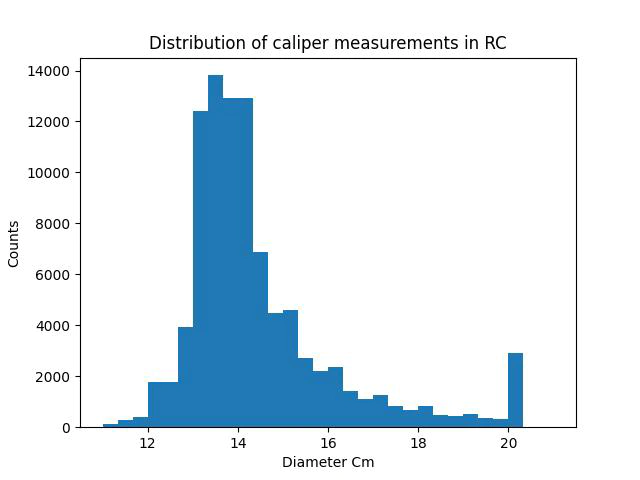
Looking over the histogram we can see a few points of interest:
- Measurements at the limit of the caliper: cavities by our definition above.
- The median sits at 13.9cm and the mean at 14.4cm.
- There is a significant skew to the right, lets assume that this distribution represents cavities.
Let’s now consider the process of drilling, I assume that the drilling process interacts with the rock mass to produce two distributions of hole diameter.
- the first approximately normally distributed, this is is generated by the bit interacting with solid rock and most of the small scale caving at the borehole is is due to plucking fragments at the sidewall.
- the second an exponential distribution that generates cavities by dissolution
I’m not sure that my model outlined above accurately describes reality, so we confirm that it matches the distribution of caliper data by simulation.
First simulate small scale rugosity around the borehole wall
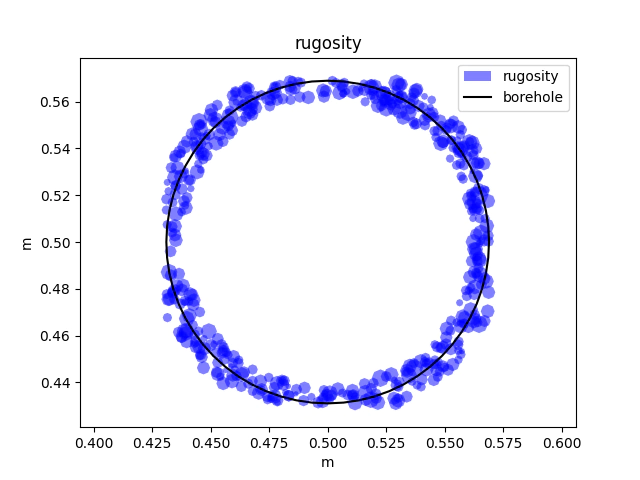
We now add cavities to the model as well.
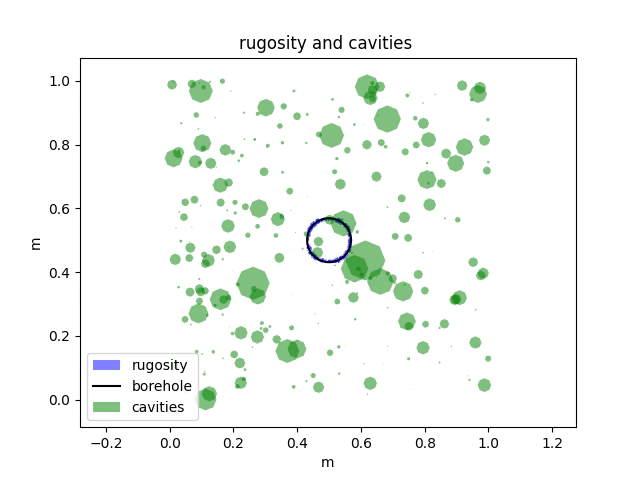
Now that we have both rugosity and cavities in the model we are going to intersect them with the borehole, and take multiple measurements across the borehole to assist in building up a distribution of caliper measurements.
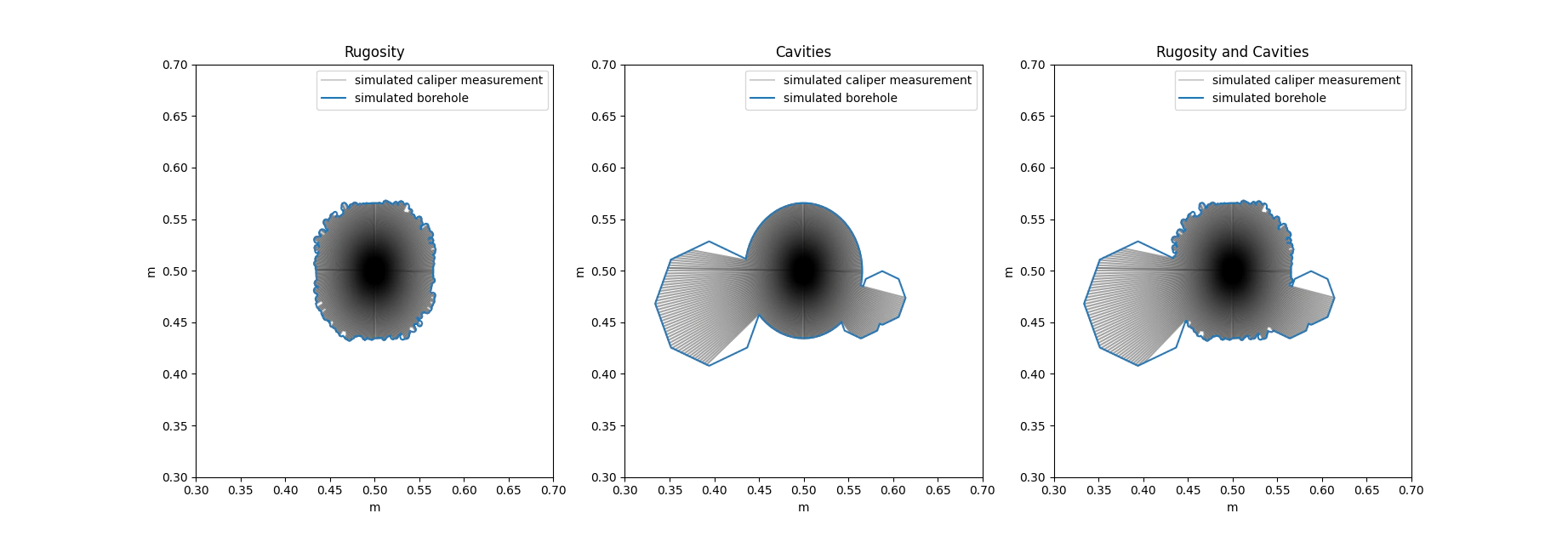
After enough runs to build up the statistics we can then look at the simulated distributions for the hole diameter by each of the processes seperately and together against the measured data.
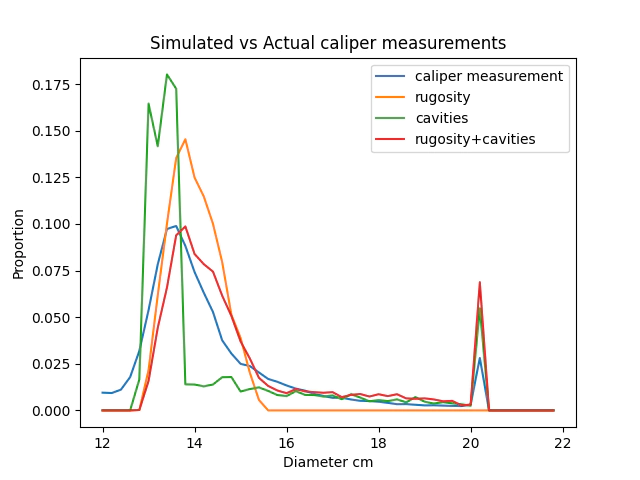
Comparing the modeled vs reality we can see that the match is decent, at this point I have enough confidence to go forward and use the exponential distribution in the simulation to take a probablistic approach to detection of large cavities in MWD data.
Let’s take that up in Part 2.
Thanks,
Ben.